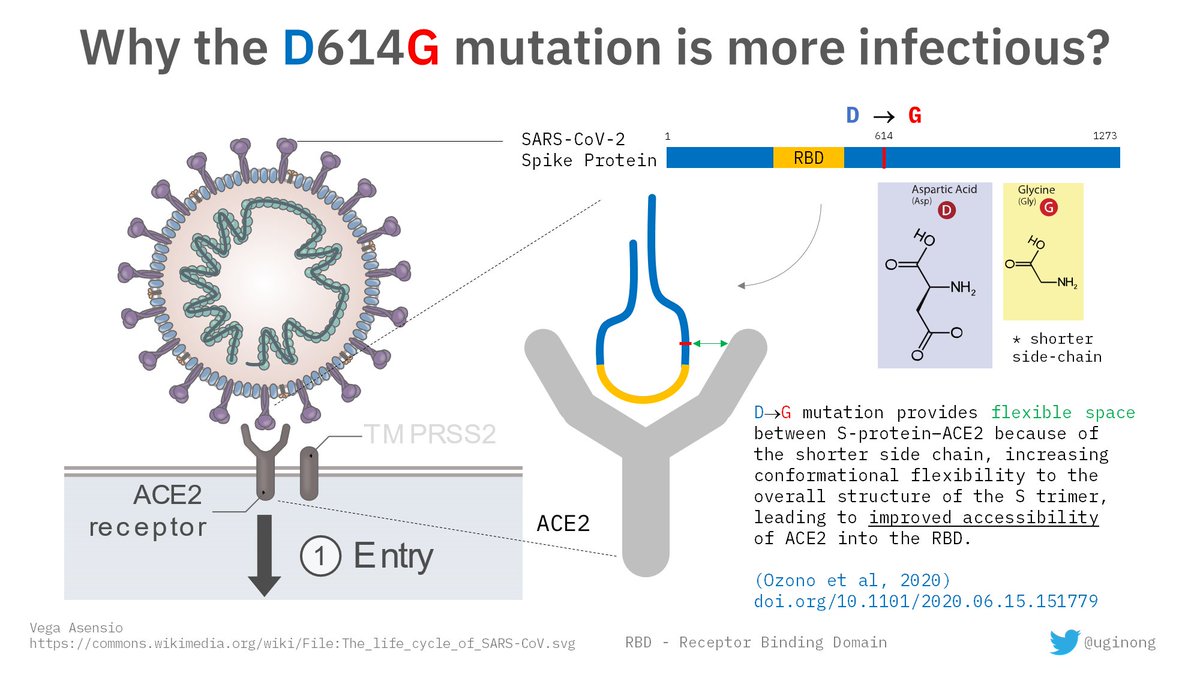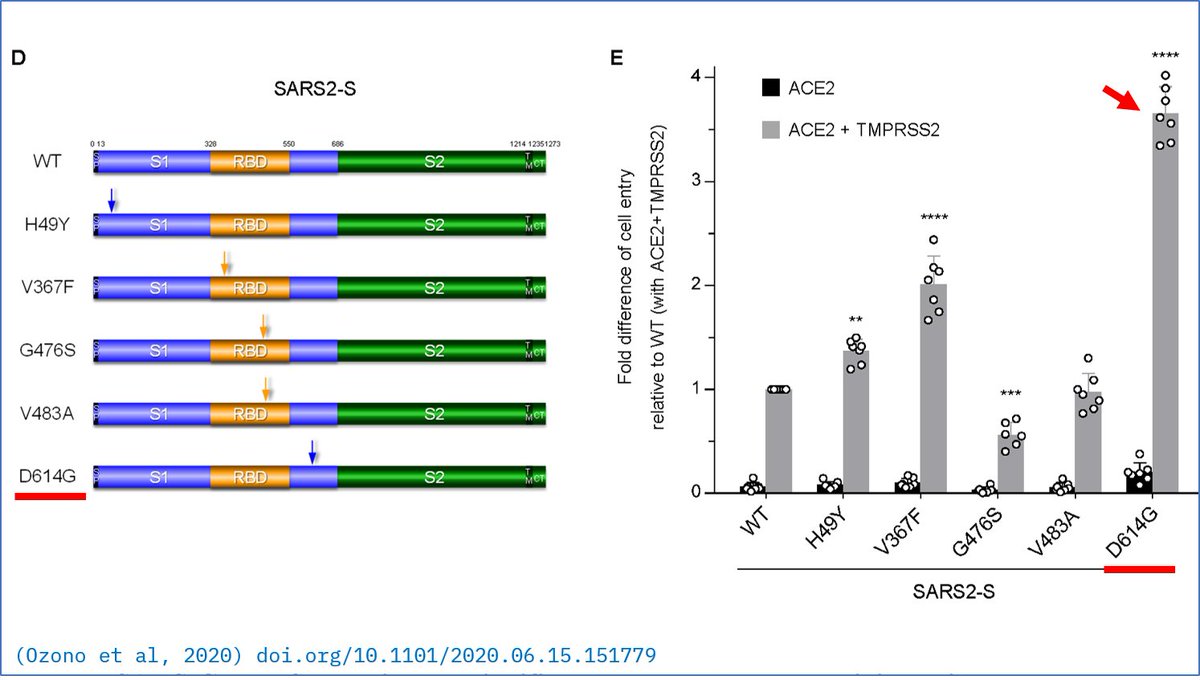Summary of ‘Naturally mutated spike proteins of SARS-CoV-2 variants show 2 differential levels of cell entry’ preprint by Ozono et al., 2020. https://doi.org/10.1101/2020.06.15.151779
Disclaimer: This summary is shared as a first-time scicomm exercise.
Thread. https://twitter.com/DGHisham/status/1294683477737013250
Disclaimer: This summary is shared as a first-time scicomm exercise.

Thread. https://twitter.com/DGHisham/status/1294683477737013250
1. The SARS-COV (SARS) and SARS-COV-2 (SARS2) has a Spike protein (S-protein) that is recognised by the human ACE2 (an enzyme on the surface of cells) for viral entry. The S-protein is 1273 amino acids (aa) in length.
2. A more infectious variant has emerged dubbed D614G is a virus with a mutated S-protein – a change (mutation) at position 614 of the S-protein aa chain from D (aspartic acid), found on the Wuhan-Hu-1 strain, to G (glycine).
3. SARS is well adapted to ACE2, a likely explanation for efficient viral entry and infectivity. But SARS2 is less adapted to ACE2 and depends on the presence of TMPRSS2 (another enzyme located on the surface of cells just like ACE2) for efficient cell entry.
4. While SARS can target multiple cell types in different organs with ACE2 alone, SARS2 is thought to mainly infect only respiratory and intestinal cells (or other cells) that have both the ACE2 and TMPRSS2 proteins.
5. Because SARS2 is ‘less efficient’ compared to SARS in terms of cell entry, this is why SARS2 can cause more asymptomatic infections of COVID-19, leading to prolonged carrier state and ‘more efficient’ spread in the community.
6. Ozono et al. found that the D614G mutant has the highest cell entry activity compared to other S-protein mutants* they tested (~3.5-fold higher than the wild-type/Wuhan-Hu-1 protein).
* there are also other SARS2 S-protein mutants in circulation.
* there are also other SARS2 S-protein mutants in circulation.
7. The more efficient cell entry by the D614G mutant suggests higher transmissibility because to cause infection a minimum number of virus particles are required to enter host cells. Easier cell entry also means more viral particles can enter a cell at the same exposure dose.
8. The D614G mutation defines the clade A2a, which has overwhelmingly spread worldwide.
- 87% of cases in New York City.
- 76% of cases in Iceland.
- second-wave cases in Japan.
- almost all of the cases in Italy.
A clade is like a group from the same ancestor in a family tree.
- 87% of cases in New York City.
- 76% of cases in Iceland.
- second-wave cases in Japan.
- almost all of the cases in Italy.
A clade is like a group from the same ancestor in a family tree.
9. Although D614G can reproduce faster ~3 days compared to ~7 days for the Wuhan-Hu-1 strain, luckily the D614G S-protein is still antigenic (antibodies can still recognise this mutant protein with one aa change) and it will not affect drug/vaccine development, at least for now.
10. Why COVID-19 is a once-in-a-century pandemic while SARS is not?
- SARS2 do not enter our cells efficiently
- Inefficient entry means inefficient replication, inefficient replication means more asymptomatic infection, more asymptomatic infection means more spread in community
- SARS2 do not enter our cells efficiently
- Inefficient entry means inefficient replication, inefficient replication means more asymptomatic infection, more asymptomatic infection means more spread in community
11. From the virus’ perspective, inefficient viral transmission means more time to mutate as the virus slowly spreads without killing its hosts. Thus, SARS2 causes damage not because of its super infectivity but in being, as Malaysians like to say, ‘slow and steady!’
-END-
-END-

 Read on Twitter
Read on Twitter



